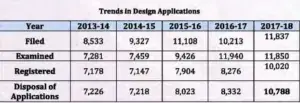Myanmar- Trademark Registration Starting – October 1, 2020.
 The Ministry of Commerce of Myanmar has issued a notification no. 63/ 2020 dated August 28, 2020 announcing that soft opening period for re-filing trademarks under the new law in Myanmar will commence from October 1, 2020..
The Ministry of Commerce of Myanmar has issued a notification no. 63/ 2020 dated August 28, 2020 announcing that soft opening period for re-filing trademarks under the new law in Myanmar will commence from October 1, 2020..
Global Innovation Index a2020: India ranked at 48 among 131 countries.
 The World Intellectual Property Organization (WIPO) released the Global Innovation Index 2020: Who will Finance Innovation? on September 02, 2020. This year, the GII rankings were topped by Switzerland, Sweden, U.S., U.K. and Netherlands while India, China, the Philippines,..
The World Intellectual Property Organization (WIPO) released the Global Innovation Index 2020: Who will Finance Innovation? on September 02, 2020. This year, the GII rankings were topped by Switzerland, Sweden, U.S., U.K. and Netherlands while India, China, the Philippines,..
Delhi High Court extends interim orders till October 31.
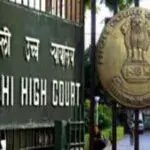 The Indian Daily, The Economic Times has reported that the Hon’ble Bench of Delhi High Court comprising of Chief Justice D.N. Patel and Justices Siddharth Mridul and Talwant Singh have further extended the order passed by the Delhi High Court with reference to extension of interim orders..
The Indian Daily, The Economic Times has reported that the Hon’ble Bench of Delhi High Court comprising of Chief Justice D.N. Patel and Justices Siddharth Mridul and Talwant Singh have further extended the order passed by the Delhi High Court with reference to extension of interim orders..
Innovative Relationship of Patents & Business Entities During Crisis.
 Intellectual property has always driven business entities around the globe to innovate and prove its mark in the dynamic environment. IP has played a major role in promoting research and development to stay ahead of the hefty competition..
Intellectual property has always driven business entities around the globe to innovate and prove its mark in the dynamic environment. IP has played a major role in promoting research and development to stay ahead of the hefty competition..
Validity of Motor Vehicle Documents extended till December 31, 2020.
 The Union Ministry of Road Transport and Highways (MoRTH) has notified on August 24, 2020 that the validity of all motor vehicle documents such as fitness, permits, licenses, registration papers, etc., under the provisions of Motor Vehicle Act..
The Union Ministry of Road Transport and Highways (MoRTH) has notified on August 24, 2020 that the validity of all motor vehicle documents such as fitness, permits, licenses, registration papers, etc., under the provisions of Motor Vehicle Act..
BIS Certification for “Safety of Toys” made Compulsory.
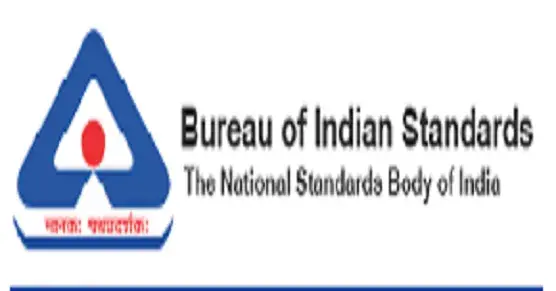 The Bureau of Indian Standards (hereinafter referred to as BIS) is a statutory body established under the Bureau of Indian standards Act, 2016 (hereinafter referred to as the Act). One of the main functions of BIS is to prescribe standards for covering goods and systems under the BIS regime..
The Bureau of Indian Standards (hereinafter referred to as BIS) is a statutory body established under the Bureau of Indian standards Act, 2016 (hereinafter referred to as the Act). One of the main functions of BIS is to prescribe standards for covering goods and systems under the BIS regime..
GST registration after physical verification of business place if Aadhaar not authenticated.
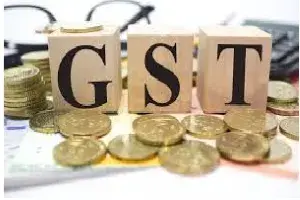 As per the fresh directions issued by the Central Board of Indirect Taxes and Customs (CBIC) vide Notification no. 62/2020, businesses willing to register under GST can choose to opt for Aadhaar authentication, in the absence of which registration would be granted after physical verification of the place of business..
As per the fresh directions issued by the Central Board of Indirect Taxes and Customs (CBIC) vide Notification no. 62/2020, businesses willing to register under GST can choose to opt for Aadhaar authentication, in the absence of which registration would be granted after physical verification of the place of business..
Renewal of Vehicle Insurance- Pollution Under Control (PUC) Certificate mandatory.
 The Insurance Regulatory and Development Authority of India (IRDAI) has issued a circular dated 20th August, 2020[1] , whereby it has asked all the general insurance companies in India to obtain a valid Pollution under Control (PUC) Certificate for vehicles at the time of renewal of insurance policy. The IRDAI’s circular has been issued in pursuance of the order passed by the Hon’ble Supreme Court of India in M.C. Mehta v. Union of India..
The Insurance Regulatory and Development Authority of India (IRDAI) has issued a circular dated 20th August, 2020[1] , whereby it has asked all the general insurance companies in India to obtain a valid Pollution under Control (PUC) Certificate for vehicles at the time of renewal of insurance policy. The IRDAI’s circular has been issued in pursuance of the order passed by the Hon’ble Supreme Court of India in M.C. Mehta v. Union of India..
Protection and Enforcement of Design Rights in India.
 An innovative design has the potential to revolutionize the industry. Simplest of designs with their inherent efficiency and uniqueness have catered to consumers’ basic needs for decades. Seldom known famous designs which might have skipped one’s attention, but not their needs include the ball-point pen, bendy straw, angelpoise lamp…
An innovative design has the potential to revolutionize the industry. Simplest of designs with their inherent efficiency and uniqueness have catered to consumers’ basic needs for decades. Seldom known famous designs which might have skipped one’s attention, but not their needs include the ball-point pen, bendy straw, angelpoise lamp…
Myanmar- Trademark Registration Starting – October 1, 2020.

The Ministry of Commerce of Myanmar has issued a notification no. 63/ 2020 dated August 28, 2020 announcing that soft opening period for re-filing trademarks under the new law in Myanmar will commence from October 1, 2020. The new trademark law in Myanmar will operate in two phases as under:
1. Soft Opening Period (from October 1, 2020 to March 31, 2021)
2. Grand Opening (from April 1, 2021)
The ‘soft-opening period’, will commence for recognizing existing trademark registrations by allowing these registrations to be re-filed in order to maintain the protection of their trademarks under the new law on a first to file principle. The Ministry may periodically announce additional requirements or stipulations as the soft opening period progresses. No new trademark will be received for registration during this transition period.
Myanmar- Trademark Registration- Requirements
1. Owner’s name and address
2. Clear specimen of the proposed mark;
3. Classes and list of goods and/or services (identical to those already recorded with the Registrar of Deeds);
4. Claim of priority (if any) and its supporting documents;
5. Claim of colors of the mark;
6. A scanned copy of the recordation of the declaration of ownership or renewal the Registrar of Deeds;
7. If the trademark is already used in Myanmar, evidence of use and the first date of use.
Further, the official fee under the new law, including trademark application filing fees, shall be announced vide a separate notification by the Ministry before the soft opening period begins.
Related Posts
Global Innovation Index a2020: India ranked at 48 among 131 countries.

The World Intellectual Property Organization (WIPO) released the Global Innovation Index 2020: Who will Finance Innovation? on September 02, 20201. This year, the GII rankings were topped by Switzerland, Sweden, U.S., U.K. and Netherlands while India, China, the Philippines, and Viet Nam have been listed as the economies with most significant progress in their GII innovation ranking over the years.
TOP 3 INNOVATION ECONOMIES BY REGION
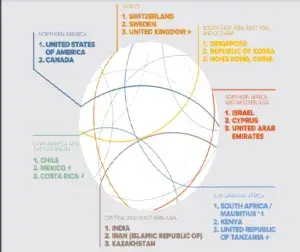
Applied to an Article
Besides the fundamental criteria of providing a visual appeal to the final consumer, a design must be applied to an article and not the article itself, in order to seek protection under the said statute. Article means any article/substance, whether artificial or partly artificial and partly natural, and capable of being made and sold separately3 such as the iconic designs of Apple’s iPhone (Reg. No. D0842298) and Volkswagen’s Beetle (Reg. No. D0774952). As per Section 6 of the Act, a design may be registered in respect of any or all of the articles in a prescribed class of articles, and registration of designs for multiple articles in the same class is not barred. Thus, if an article is capable of being manufactured or sold separately and visually appeals the eye, a design can be registered separately in respect of that article. Design protection can also be claimed for a ‘set’ of articles, which have same characteristics and are usually sold together4. This ensures a wide ambit of protection to the registrant and subsequently, aides in challenging infringement of a registered design in respect of same/similar articles.
Design Registration- India
The Act purports to protect novel or original designs, capable of being applied to a particular article that can be manufactured by an industrial process/means. Designs play an integral part in a consumer’s shopping experience, as often times, the articles are purchased on both utilitarian and aesthetic aspects. The important purpose of design registration is to ensure that the artisan, creator, originator of a design having aesthetic look is not deprived of his bonafide reward by others applying it to their goods. Hence, originality of a new design has been deemed as origination of a design from the author of such design and includes the cases which though old in themselves yet are new in their application5. Similar obiter was cited by the Hon’ble High Court in Shree Vari Multiplast India Pvt. Ltd. v/s Deputy Controller of Patents & Designs & Others that the law of design right does not prevent competitors from using same methods or principle of constructing to create competing designs, so long the competing designs do not have the same shape or configuration as that of the original design of the proprietor.
Therefore, some essential criteria for design registration, as per Section 4 of the Act, mandates a design to be:
- New or novel;
- Has not been anticipated by publication or use anywhere in the world, including in India or prior claimed in application elsewhere i.e. does not form a part of public domain or state of the art;
- Significantly distinguishable from known designs or combination of known designs; and
- Should not contain any scandalous or obscene matter
The subtext is evident on a bare perusal of the provision that the applicant for registration makes a declaration on a prescribed form, in lieu of the design for which registration is sought, and that the same is not vulnerable to any condition as stipulated under Section 4 of the Act6.
Locarno Classification
The Locarno Agreement was first introduced in 1968 as a touchstone for uniform international classification of goods for registration of industrial designs. The Classification houses classes and sub-classes of 5,000 alphabetically-listed goods7. With India’s formal accession to the Locarno Classification Agreement in June, 2019
Representation of a design
In order to effectively enforce one’s design rights, it is pertinent to represent all the elements of a design. If a design’s features are capable of segregation and each fulfils the essential criteria for registration, separate applications can be filed under the Act. In Vega Auto Accessories (P) Ltd. vs S.K. Jain Bros. Helmet (I) Pvt8 , the Hon’ble Court opined that while comparing two designs, their sameness of the features does not necessarily mean that the two designs must be identical in all the aspects and should differ on none. Rather they can be substantially same even.
Enforcement of Design Rights
Duration of protection
Once a design meets the statutory conditions, it is registered and the proprietor of the design acquires a copyright over that design which lasts for a duration of 10 years from the date of registration (in cases where claim to priority has been allowed, the duration is 10 years from the priority date), further extendable to an additional period of 5 years upon a request made within the said protection period.9 The date of registration, except in case of priority, is the actual date of filing of the application. In case of registration of design with priority, the date of registration is the date of making an application in the reciprocal country.
Infringement
A registered owner of a design acquires exclusive rights to apply the design in respect of article(s) for which registration is sought for. A fraudulent or obvious imitation of the design thereof, in respect of a similar article, for the purpose of sale or importation of such article, without the written consent of the registered proprietor, amounts to piracy of a registered design10. Publication or exposing such articles for sale with knowledge of the unauthorized application of the design to them also involves piracy, attracting pecuniary damages and injunction reliefs. A suit for infringement of copyright in design or piracy of registered design shall be filed before the Controller of Designs, and shall possess powers of a civil court in disposing off the same.
Marking of an article to obtain Relief under the Act
It is the duty of the registered owner of a design to affix on his article(s) on which registered design has been applied, with the prescribed mark or words or figures, which expressly denote that such a design has been registered with the Controller. A failure to do so renounces the right to file a claim of infringement and damages in the future. In such a case the registered owner must show proof beyond reasonable doubt that –
- All necessary steps to mark the article were taken; or
- Infringement took place after receiving knowledge of the copyright existence
Overlap of protection vis-a-vis Design Rights
Design rights are notoriously famous for overlapping with other IP rights inter alia copyrights. Although, scope of protection extends only to the aesthetic features of a design and not to functionality, unlike under patents which grant protection to inventions resulting in technological advancements and functionality thereof.
By definition, the registered proprietor of a design acquires a copyright in the said design. There is no simultaneous protection for a design under the Copyright Act and the Designs Act, as Section 15(1) of the Copyright Act bars copyright protection to a registered design. Copyright in an unregistered design would also cease once the design has been reproduced more than 50 times by an industrial process by the owner or with his license, by another person11.
Design Protection under the Paris Convention
India is one of the countries signatory to the Paris Convention. Therefore, the provisions for the right of priority are applicable. Based on a regular application first filed in any one of the contracting state, the applicant may, within a time-period of not more than six months (from the date of filing the first application in India), apply for design protection in other contracting states. The latter application will be treated as if it had been filed on the same day as the first application.
Penalty and Compensation
In reference to Section 22(2) of the Act, a base amount is provided by the legislation to the aggrieved party as statutory compensation i.e. a minimum of INR 25,000, which goes a maximum of INR 50,000 at present. The party also has the option to file a suit for recovery of damages based on the accounts of actual profits, alongwith injunction. In the recent case of Steelbird Hi-Tech India Ltd. vs. Asia Fibre Glass Products & Anr.,12 wherein the Defendant was engaged in manufacturing and trading of helmets with identical design as those of the Plaintiff’s. It was contended that due to the uniqueness and novelty of the helmet’s design, the Plaintiff’s product had acquired a substantial reputation in the market, both India and abroad and is solely associated with the Plaintiff alone. Although, a fair observation that the design of a helmet may be restricted to certain shapes, the Hon’ble Court passed an ex parte permanent injunction, alongwith entitlement to the Defendant’s profits worth over INR 96 lacs. The case highlights the paucity in the provision and the judicial review exercised to rectify and interpret the relevant law in question as statutory compensation under Section 22 leaves the party open to receive a few pennies as compared to the actual losses and damages suffered, and the damages offered in a suit would rest entirely on the Court’s discretion upon producing an accurate account of infringer’s profits.
Conclusion
Designs play a crucial role in visually differencing one’s products from its competitors and with the rise of competition in the industry, protecting one’s designs is pertinent to attain an edge in the industry. The criteria of visual appeal to be a design, leaves an impression in the consumer’s mind and over the time, associates with the owner alone. The Designs Act, 2000, was formulated with an intent to promote innovation and creativity in sync with the global industrial and technological sector. The niche and extensive framework, with its streamlined application process and period amendments, ensures proprietors/owners are awarded statutory rights, in harmony with international treaties and agreements such as the 2014 amendment to the Designs Rules which brings in ‘small entity’ as a new category of applicant in addition to natural person. Moreover, we also look forward to have the Start-ups included in the list of applicants in the Indian Design Laws.
[1] Section 2(d) of the Designs Act, 2000
[2] Section 5 of the Designs Act, 2000
[3] Section 2(a) of the Designs Act, 2000
[4] Rule 2 (e) of the Design Rules, 2001
[5] Section 2(g) of the Designs Act, 2000
[6] Pentel Kabushiki Kaisha & Anr. vs M/S Arora Stationers & Ors CS(COMM) 361/2017
[7] FAQs : Locarno Classification; Locarno Classification accessed on May 18, 2020
[8] CS(COMM) 837/2017
[9] Section 11(1) of the Designs Act, 2000
[10] Section 22(1) of the Designs Act, 2000
[11] Section 15(2) of the Copyright Act, 1957
[12] CS(COMM) 1366/2016
Source: GII 2020
Impact of COVID-19 on Innovation
GII crucially analyses the impact of COVID-19 pandemic which has impacted almost all walks of life and sectors. In this context the report strongly words that COVID-19 pandemic has triggered an unprecedented global economic shutdown which has severely hindered the innovation worldwide. The report also states that the crisis struck innovation when it was flourishing and the situation requires for government support as well as collaborative models and also continued private sector investment in innovation.
Decline in Innovation Finance
The GII also reports a decline in innovation finance and one of the critical areas recognized is the impact of the current crisis on start-ups, VC (venture capital), and other sources of innovation financing. The findings indicate that money to fund innovative ventures is drying up as there are few initial public offerings (IPOs) in sight, and the start-ups that survive may grow less attractive and profitable for—venture capitalists.
India’s Position- GII 2020
- India’s Global Innovation Index 2020 rank is 48 among 131 economies, moves up by four positions since 2019
- India tops the list in innovation economies ranking in the Central and South Asia
- India ranks 3rd among the lower middle-income group. GII remarks this as a new milestone
- India ranks high in Knowledge and technology outputs and Market sophistication
- India ranks high in Knowledge and technology outputs (27th) and Market sophistication (31st) contrast with its relatively lower rank in Infrastructure (75th)
- India has been recognized of being innovation achievers for 10 consecutive years
- India ranks 2nd for the fifth consecutive year- with top positions in the quality of scientific publications (21st globally) and the quality of its universities (22nd). Indian Institute of Technology (Bombay and Delhi) and the Indian Institute of Science Bengaluru have been recognized as top 3 universities.
- India increases the most in three pillars: Institutions (61st), Business sophistication (55th), and Creative outputs (64th)
- Report recognized India for valuable brands and ranks 31st in the GII indicator on Global brands. India’s 164 brands led by TATA Group feature in the top 5,000 brands globally.
- India recognized for a vibrant start-up ecosystem as it has 6 of the top 100 most entrepreneurial cities in the world
- India recognized for investing in Science intensive industries including medical sciences and biosciences as these instruments can effectively be used to foster investments
- India recognized for nurturing its start-up ecosystem
- India’s investment in R&D has decreased over the last decade from 0.85% of GDP in 2008–2009 to remain stagnant at around 0.7% for the last several years.
- The report recognizes the efforts of multiple government departments like notably the Department for Promotion of Industry & Internal Trade (DPIIT), NITI Aayog, DST, and DBT for being instrumental in framing the policies and regulations for start-up investments.
- The newly amended CSR rule mandating profitable companies to contribute to incubators and research projects in publicly funded universities, Indian Institutes of Technology (IITs), and national laboratories and recognizing it as eligible for CSR funding has been noted as one of the driving forces for investment in start-ups in India.
India has been remarked as the “Innovation achievers” and also the Indian start-up ecosystem has been praised as exemplary for boosting start-up investments and funding. The concerted efforts of the Government to build a conducive environment for fostering innovations and start-ups appears to be streamlining and consistent efforts may make India a developed economy in near futur
[1] Global Innovation Index 2020
Related Posts
India climbs six places to rank 60 in Global Innovation Index




